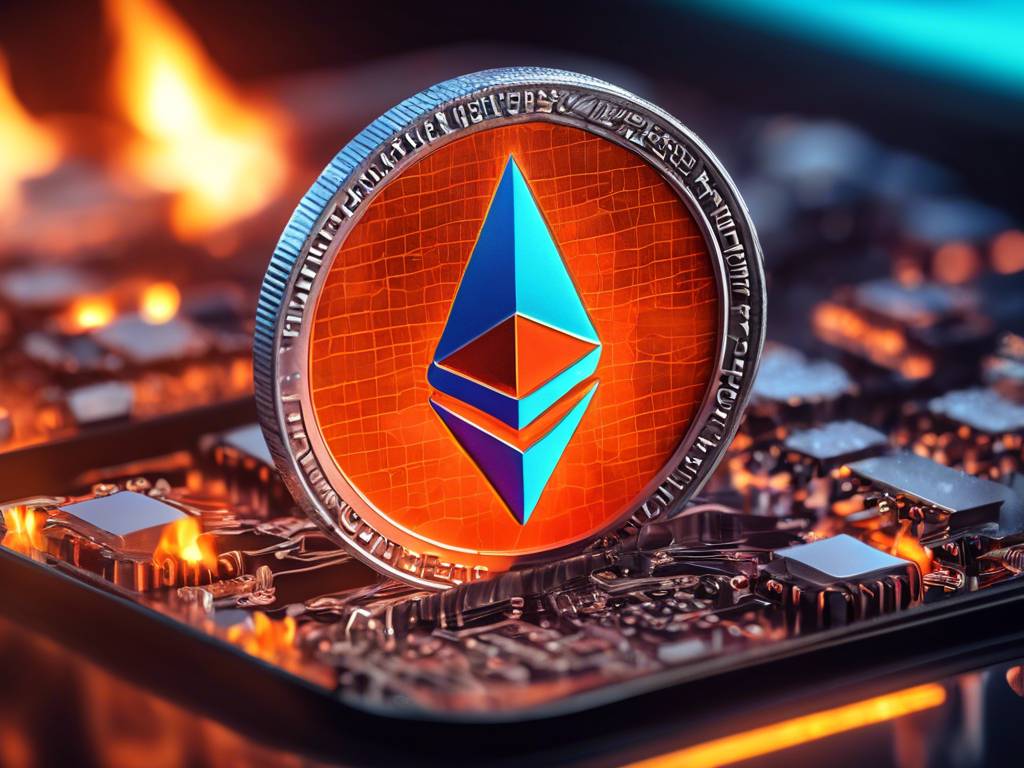Understanding the Recent Drop in Ethereum Gas Fees and ETH Burning 🌐
The Ethereum network has experienced a significant decrease in the daily amount of ETH burned, reaching its lowest levels this year. This decrease is primarily attributed to a recent drop in average gas fees. Here is a breakdown of the key factors influencing this trend:
– Gas Fees at a Low: Gas fees on the Ethereum network are currently ranging between 5 and 10 gwei, representing some of the lowest levels observed throughout the year. This decrease in gas fees is directly impacting the issuance of ETH.
– Record-Low ETH Burn: As a result of the reduced network fees, the amount of ETH burned on Sunday plummeted to only 610 ETH, marking a record low for this year. In contrast, during the first four months of the year, the daily ETH burn rate remained consistently above 2,500–3,000 ETH.
– Shift to Layer 2 Scaling: The decline in gas fees can be partly attributed to a shift towards Layer 2 scaling solutions. Additionally, the adoption of blob transactions following the Dencun upgrade in March has played a role in reducing transaction costs on Layer 2 networks.
– Impact on Ethereum’s Economic Model: The dynamics of gas fees and ETH burning play a crucial role in shaping the network’s economic model. While lower fees are advantageous for network users, the recent drop in ETH burn has implications for Ethereum’s deflationary mechanism.
– London Hard Fork and EIP-1559: The London hard fork, which introduced EIP-1559 in August 2021, brought significant changes to Ethereum’s fee structure. This upgrade implemented a base fee that is burned and a priority fee that serves as a tip to validators. The base fee, determined by network usage, influences the amount of ETH burned from the supply.
– Supply Dynamics: In the past week, Ethereum’s supply has shifted from a deflationary to an inflationary state, with a growth rate of 0.49%. Monitoring the balance between ETH issuance and burning will determine whether Ethereum remains inflationary or reverts to a deflationary state.
Implications of Reduced Gas Fees and ETH Burning 🔥
As an active participant in the crypto space, it is essential to grasp the implications of the recent drop in Ethereum gas fees and ETH burning:
– Economic Incentives: Lower gas fees may attract more users to the Ethereum network, as reduced transaction costs make interacting with decentralized applications (dApps) more affordable. However, the decrease in ETH burning could impact the deflationary nature of Ethereum, altering its economic incentives for stakeholders.
– Network Sustainability: The balance between gas fees and ETH burning is vital for maintaining the sustainability of the Ethereum network. While lower fees enhance user experience, the deflationary mechanism provided by ETH burning contributes to the overall health and stability of the ecosystem.
– Market Dynamics: Fluctuations in gas fees and ETH burning can influence market sentiment and investor behavior within the crypto industry. As Ethereum navigates these changes, it is essential for market participants to monitor these trends and adapt their strategies accordingly.
– Future Outlook: Observing how Ethereum’s supply dynamics evolve in response to shifting gas fees and ETH burning rates will provide insights into the network’s long-term sustainability. As the crypto landscape continues to evolve, staying informed about these developments will be crucial for navigating the digital asset space effectively.
As an active member of the crypto community, understanding the nuances of Ethereum’s economic landscape is crucial for making informed decisions and navigating the evolving digital asset space. By monitoring trends in gas fees, ETH burning rates, and supply dynamics, you can stay ahead of the curve and position yourself strategically in a rapidly changing market. Stay informed, stay engaged, and seize the opportunities that Ethereum’s economic ecosystem presents. 📈
Theon Barrett shines as a distinguished crypto analyst, accomplished researcher, and skilled editor, making significant strides in the field of cryptocurrency. With an astute analytical approach, Theon brings clarity to intricate crypto landscapes, offering insights that resonate with a broad audience. His research prowess goes hand in hand with his editorial finesse, allowing him to distill complex information into accessible formats.

